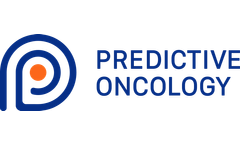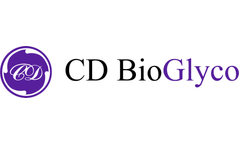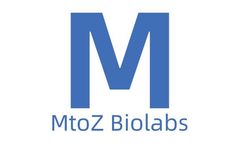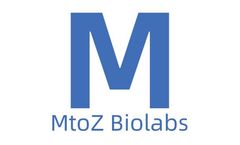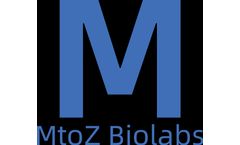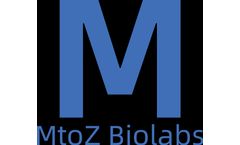Drug Platform Candidate Articles & Analysis
56 articles found
Population growth, aging populations and increases in cancer incidence have necessitated new approaches to identifying effective treatments. One such approach involves the repositioning, or repurposing, of drugs already FDA approved in either non-oncology disease states and/or approved in a limited number of tumor types. The repurposing of these drugs for new indications represents an ...
In the realm of drug discovery, kinase screening services have emerged as a pivotal tool for understanding complex cellular signaling pathways and identifying potential therapeutic targets. Kinases are enzymes that play a crucial role in regulating cellular functions by adding phosphate groups to proteins, a process known as phosphorylation. This post-translational modification can activate or ...
Understanding the metabolic stability of potential drug candidates is paramount in the realm of pharmaceutical development. S9 metabolic stability assays provide critical insights into how a compound behaves within biological systems, especially concerning its metabolism, stability, and overall pharmacokinetics. At the core of S9 metabolic stability is the S9 fraction, which is a liver extract ...
The MDCK permeability assay is a critical technique employed in pharmacology and drug development to evaluate the permeability of drug candidates across epithelial cell layers. This assay utilizes Madin-Darby Canine Kidney (MDCK) cells, which are a widely used model for studying intestinal absorption and permeability due to their similarity to human epithelial cells. Importance of the MDCK ...
Introduction Custom knockout cell lines represent a groundbreaking advancement in molecular biology and genetics, allowing researchers to manipulate genes with precision and study their functions in a controlled environment. By creating cell lines with specific genes “knocked out,” scientists can investigate disease mechanisms, screen drug candidates, and develop gene therapies more ...
In recent years, the rise of drug-resistant cells has emerged as one of the most significant challenges in the field of medicine, particularly in oncology and infectious diseases. The effectiveness of current therapies is often hindered by the ability of certain cell populations to develop resistance, leading to treatment failure and disease progression. This article explores the importance of ...
It is the process that bridges the gap between basic research and clinical testing, allowing for the evaluation of potential drug candidates in biological systems before they are tested in humans. ...
In the realm of pharmaceutical research and development, ADME testing services play a pivotal role in evaluating the pharmacokinetics of drug candidates. ADME stands for Absorption, Distribution, Metabolism, and Excretion, which are critical processes that determine the fate of a drug within the body. Effectively assessing these parameters is essential for ensuring the safety, efficacy, and ...
In the rapidly evolving field of pharmaceuticals, nanotechnology has emerged as a revolutionary force, transforming the landscape of drug delivery and formulation development. The integration of nanotechnology into pharmaceutical formulation offers unprecedented opportunities to enhance the efficacy, safety, and convenience of therapeutic interventions. This article explores the profound impact ...
Understanding the complex world of drug discovery and development necessitates familiarity with key players in cellular communication. A pivotal group in this arena is G Protein-Coupled Receptors (GPCRs). These receptors play a crucial role in transmitting signals across cell membranes, significantly influencing numerous physiological processes. Consequently, GPCRs have become a central focus in ...
Key Components of Glycan Microarrays Glycan microarrays are specialized tools that provide a platform for studying carbohydrate structures and their interactions with proteins or other biological molecules. ...
In vitro permeability assay kits play a crucial role in the field of pharmaceutical development, particularly when evaluating the absorption characteristics of drugs. These kits allow scientists and researchers to investigate how compounds permeate biological membranes, which is vital for understanding drug bioavailability. Understanding Permeability Permeability refers to the ability of a ...
Protein phosphorylation is an important post-translational modification process that involves adding a phosphate group to an amino acid residue in a protein, usually a serine, threonine, or tyrosine residue. Protein phosphorylation plays a key role in regulating various biological processes within the cell, including signal transduction, cell cycle, and metabolism. Therefore, detecting protein ...
Secretory proteins refer to those proteins that are synthesized by cells and secreted to the outside of the cell. They play an important role in many biological processes such as signal transduction, cell communication, immune response, hormone secretion, and so on. These proteins are usually synthesized in the endoplasmic reticulum (ER) of the cell and then transported out of the cell through a ...
The Latest Technological Advances in Antibody Discovery1. Single B Cell Isolation and SequencingThe isolation and sequencing of single B cells can help us gain a deeper understanding of the diversity and specificity of B cells. Through this method, we can clarify the relationship between the sequence and the cell, thus discovering antibodies with special properties. These antibodies may have high ...
Protein SequencingProtein sequencing helps to accurately analyze the amino acid sequence and three-dimensional structure of disease-related proteins, and then reveal their biological functions and interaction mechanisms, providing potential targets for new drug research.2. Peptide SequencingPeptides, as bioactive molecules, have various biological functions and are important ...
Nanobodies, also known as single-domain antibodies, have gained much attention in recent years due to their potential in various biomedical applications including drug delivery systems. Nanobodies are small antibody fragments derived from naturally occurring heavy-chain antibodies found in camelids, such as camels and llamas. They are composed of a single monomeric variable domain, making them ...
In the vast realm of drug discovery, the fusion of computational prowess and intricate molecular details has given birth to the revolutionary field of protein-small molecule docking. This innovative computational method delves deep into the complex molecular interactions between proteins and small molecules, paving the way for breakthrough advancements in therapeutic approaches and the era of ...
The development of new and effective drugs is a complex and multifaceted process that requires the collaboration of scientists from diverse fields, including chemistry, biology, and computational modeling. At the heart of this endeavor lies the art of drug design - the strategic and methodical approach to creating molecules that can effectively target and modulate biological pathways to treat ...
MtoZ Biolabs, leveraging high-precision mass spectrometry technology in conjunction with a chemical proteomics platform, provides you with high quality Collagen Analysis services and other Medical Device services. As a leading biotechnology company, MtoZ Biolabs is committed to providing comprehensive, one-stop CRO testing services to scientific research institutions and ...

